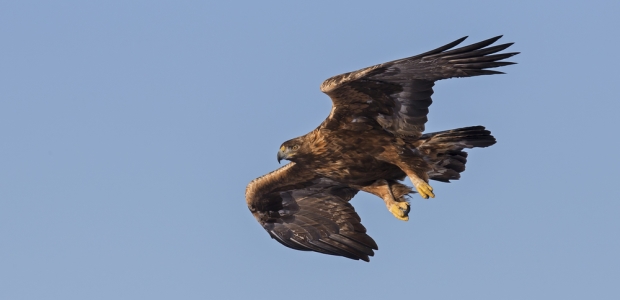
Model Predicts Bird Deaths Before Wind Facility Construction
The U.S. Geological Survey and the U.S. Fish and Wildlife Service recently released a case study that involved golden eagles partly because of their soaring and hunting behaviors.
A recently published paper outlines a study done by the U.S. Geological Survey in collaboration with the U.S. Fish and Wildlife Service. It involves a new model for predicting the bird fatalities at a wind facility before it is built. USGS reported the study examined golden eagles as a case study because they are susceptible to collisions with wind turbine blades, partly because of their soaring and hunting behavior.
Bird deaths are a leading concern for wildlife and wind facility managers. According to USGS, the model "builds upon previous approaches by directly acknowledging uncertainty inherent in predicting these fatalities. Furthermore, the computer code provided makes it possible for other researchers and managers to readily apply the model to their own data." It says the model looks at only three parameters: hazardous footprint, bird exposure to turbines, and collision probability.
"This simplicity is part of what makes the model accessible to others," said Leslie New, assistant professor of statistics at Washington State University, who headed the research project as a USGS postdoctoral fellow. "It also allows wind facility developers to consider ways to reduce bird fatalities without having to collect a complicated set of data."
Because the factors including location, local topographic features, and bird species affect the avian death rate of any wind facility, the researchers utilized publicly available data in order to incorporate a wealth of biological knowledge into the model. "Uncertainty in this model can be reduced once data on the actual number of fatalities are available at an operational wind facility," New explained. The team applied their model to golden eagles at a Wyoming wind facility; these birds are protected under the Bald and Golden Eagle Protection Act and the Migratory Bird Treaty Act, and the USFWS permitting process for wind facilities requires that fatality predictions be made before a wind facility is constructed. The new model was developed specifically for the purpose of assessing take as part of the preconstruction permitting process.
The article, "A collision risk model to predict avian fatalities at wind facilities: an example using golden eagles, Aquila chrysaetos" by L.F. New, E. Bjerre, B. Millsap, M. Otto and M. Runge, is available in PLOS ONE online.